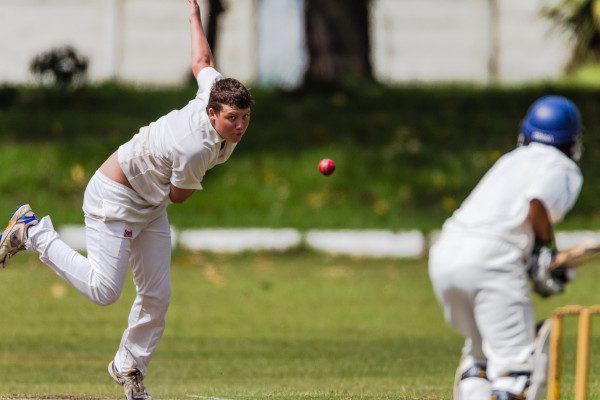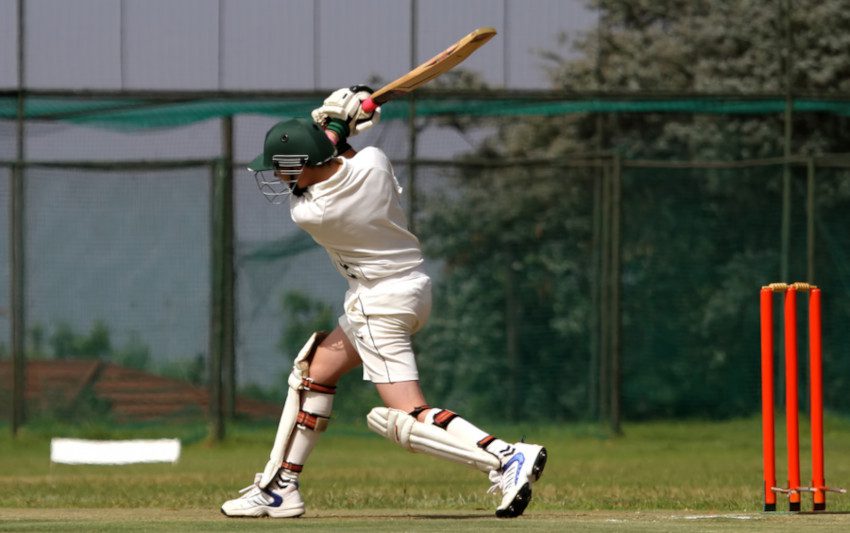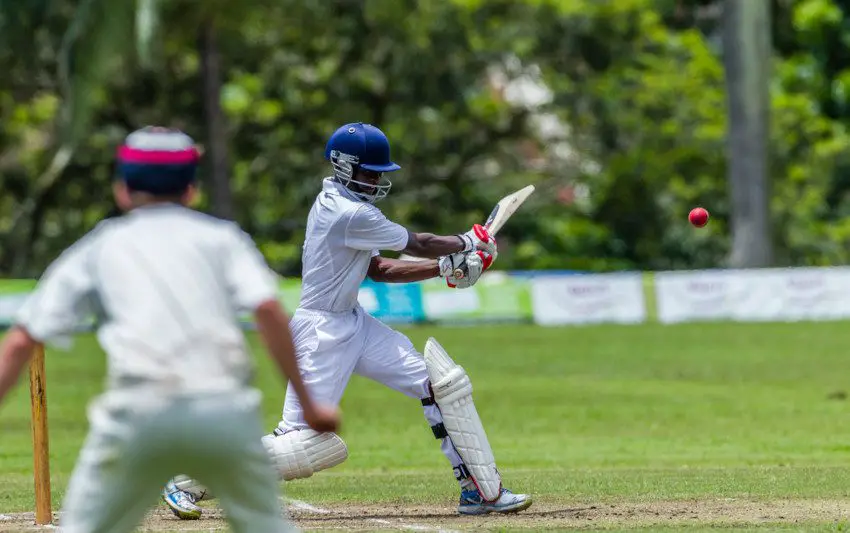Table of Contents
This is a basic guide to beginners, young and old. We all had to start somewhere and this round up is an entry point to playing your shots as a batsman.
How to Bat in Cricket: The Basics of Cricket Batting
Step 1: How to Hold the Cricket Bat
When you’re first learning how to bat, this is where it all starts. Hold the bat firmly with your left hand at the top and your right hand underneath – if you are right handed. The knuckles of your left hand should face the bowler while the thumb and index finger of your right hand will form a ‘V’ at the back of your bat.
For left handers, the order of hands is reversed.
Step 2: How to Take a Batting Stance
You may see professional cricketers using some strange stances but, before you can experiment, you should follow the basics. Your body will face the point region and your toes should be in a line with each other.
Place the bat behind the back foot and turn your head 90 degrees to face the bowler. This should all feel natural and balanced. If you are overbalancing then start the process again.

Step 3: How to Execute the Backlift
A backlift sees the batsman lift the bat in a backwards direction towards the wicket keeper. When you’re starting out, the backlift should be as vertical as possible. Make it a short backlift to begin so that you have time to bring the bat forward and play the ball. In time, you may get used to a higher backlift which puts more momentum into the shot.
Step 4: How to Judge Line and Length
Judging line and length will become easier with practise but how can you assess this when you’re just starting out? Most cricket batting tips will tell you to watch the ball very closely as it leaves the bowler’s hand.
Keep your head and eyes still and you should be able to read the speed, and where the ball is likely to pitch, in a short space of time.
Step 5: How to Choose a Shot
Shot selection will depend entirely on that line and length. If it’s a short ball outside the leg stump, then you should consider the pull or the hook. A good length ball on middle stump should mean that you will play a forward defensive.
As you learn all the different cricket shots, this will become more natural and your shot selection is based purely on the length and direction of the ball.

Step 6: How to Play the Shot
Each cricket shot comes with its own extensive set of instructions and you should study these guides closely. An attacking shot will benefit from a higher backlift and a longer follow through. Your footwork is also important as you get your front foot to the pitch of the ball.
A defensive shot would require less of a backlift and a shorter follow through. Here, we are simply defending our wicket and not looking to hit the ball a long way.
Step 7: How to Follow Through
The follow through is important because it can determine how far the ball will travel. As you learn how to play cricket shots, remember that the follow through should see the bat move in the direction in which you want to hit the ball. A longer follow through is intended to help the ball travel further while little or no follow through is recommended for defensive strokes.
Step 8: How to Decide Whether to Run or Leave the Ball
Judging a run is an essential part of learning how to bat. Is there time to complete a single or does the fielder have a chance to run you out? If the ball goes straight to a fielder then you should simply call ‘no’ to your partner.
If the ball is moving away from the fielder as they chase it then a run should be safe. Running between the wickets is another essential skill that you will learn as you practise and play more cricket.
Cricket Batting Tips for Beginners
When you’re starting out on how to learn cricket batting, I would advise studying this guide and following it exactly.
- Practise long and hard in the nets until all of this becomes natural.
- When you’re confident with stance, backlift and the other processes, you can then take this into a match situation.
- In time, you may alter your technique to suit your style of play. That’s OK and it’s an approach that has worked for some of the world’s best cricketers but it’s vital to learn how to bat in its purest sense to begin with.

Cricket Batting FAQ
How to Play Cricket Shots on the Leg Side
This is one of the hardest skills to conquer when a new player starts out. To learn cricket shots on the leg side, you should stay as still as possible and not let your head fall over to the off side.
Keep your front leg out of the way of the line of the ball: Take a short step, move your weight forward and lean into the shot with the bat moving to the leg side in line with the delivery. The bottom hand should move through and provide the power needed.
Keep practising in the nets and you’ll get much better at leg side shots.
How to Generate Power in a Cricket Shot
As you learn how to play cricket shots, you will start generating more power with a higher back lift. Remember to lift the bat higher for attacking shots only and look to finish with a longer follow through.
Bat speed will help so practise in the nets and look to move the bat more quickly in that point between the back lift and the follow through. The sweet spot meeting the ball will then give you the timing that’s needed to hit the ball further. Hitting that ball in the sweet spot is, once again, something that can only come through practise.
Closing Thoughts
Although the above guidelines apply to all batsmen, but left hander cricketers still have some difficulties when batting. For this reason, we have compiled a handful of batting tips for left handed players to make their left handedness a tactical advantage.


